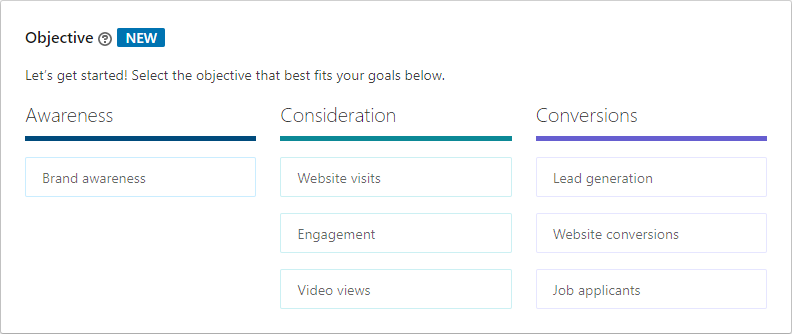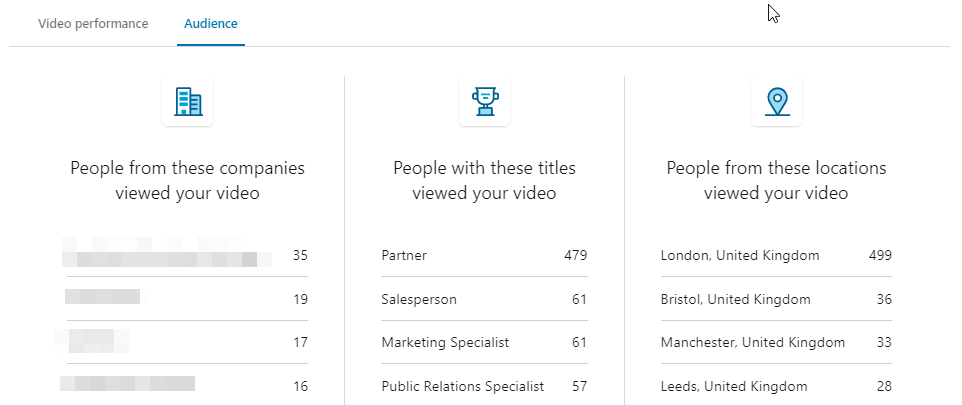Reaching your target audience with content has always been a challenge. If you’ve been tuning into this post series you’ve already seen our best practice advice for planning a content campaign, defining your topics, and creating your content.
Here we’re looking at how to reach an audience on LinkedIn through advertising.
If you are enjoying this post series signup here to be notified when that post comes out.
Reaching your clients and prospects with LinkedIn advertising

LinkedIn is not the only advertising channel, but it makes a sensible first port of call for most in the B2B space, the firmographic data and targeting options are second to none, allowing those with narrow audiences a cost-effective reach and relevant reporting.
A few years ago, the strategy was simple on LinkedIn. First, you would write a whitepaper, then you would sponsor that content, finally, you capture contact details and follow up on these in a sales capacity.
The old process no longer reflects the way people buy. Clients don't want to enter a sales process on the back of downloading a whitepaper or industry report.
That's not what we look at here. Instead, we take from marketing best practice and the Excess Share of Voice (ESOV) principle. We talk more about ESOV here, but suffice to say it is the closest thing to a "law of marketing" and is supported by study after study into marketing effectiveness and how marketing influences growth.
For a prospective client to purchase from your firm, they need to:
1. Know who you are and what services you provide
2. Believe in your firm's ability to do a good job
3. Think of you when the opportunity arises to purchase
Reaching your market on LinkedIn allows these three things to occur. Here we look at how to reach your target market and drive consideration for your brand.
Choose your category carefully and target exactly that segment only

LinkedIn is a relatively expensive ad platform when compared to Facebook. Instagram or Google Adsense. To make the most of the platform you need accurate firmographic data - information about the companies and job titles you are targeting.
Narrow your targeting criteria to exactly the people that can buy from you. Look at the last 10 people to sign off on your invoicing, look at how profitable those jobs were and consider the ideal new client.
At the very least to make LinkedIn effective you'll need Job title and industry. I cannot recommend strongly enough to go further than that and have a named list of firms. That way you ensure there is no waste and can be sure to reach the people that count.
Reach widely, regularly and cheaply within your category

Reaching widely within your segment means that you have the best possible opportunity to reach those in the market currently facing a problem you can help with. Your clients do not spend much time thinking about your services. They have their own problems of a thousand different types both personal and professional. Because only that very small fraction of your market is thinking about your services any given day, the only way to be in front of these people is to reach widely within your segment.
Reaching regularly builds the memory structures and recognition that add you to a decision-making structure. Day to day, any single ad is unlikely to have an impact. Lovingly crafted ads are read for a microsecond in between pints at the pub, while waiting for the microwave to deliver porridge or during a boring first date. Marketing is a relatively weak force that needs repetition to gently nudge a buyer in the right direction.
Reaching cheaply means sacrificing more expensive goals but ensures that you can reach your market widely and regularly. Campaigns can be phenomenally cheap on a cost-per-impression basis. Cost per impression is often overlooked for "higher intent" conversions like form completions or downloads. This is entirely contrary to the ESOV principle.
"Brands that maintain a higher share of voice relative to market share grow. Brands with a low share of voice relative to market share shrink."
Contrary to the last few years of digital marketing practice. Data on marketing effectiveness shows that you need to be regularly and widely reaching your market. You can reach widely and regularly if you let go of the more expensive targeting options and take a cost per impression approach. This does create a new challenge of demonstrating value without direct download leads - one that I will address soon.
Pick a KPI that relates to consumption

Moving away from the whitepaper KPI does present difficulties for marketers in justifying value and reporting on KPI's. It is easy to hand across a list of 50 "leads" to a business development team from a whitepaper download - the reality is that those leads very seldom convert.
The solution is to pick a KPI that can be tied to the exact firms that you have reached. Combining that with the job title targeting allows you to accurately report back to the firm on your results.
Video completions (note not impressions or views) seems to be the strongest of these, the justification being that rather than a click or an impression a video watched from start to end suggests an interest in the service being advertised.

In this way, a campaign widely targeted at the entire category can deliver really specific data on performance and intent. This data can be combined with invoicing data to show a link between advertising spend and revenue generated.
Use video. It's is easier than you think
Video on LinkedIn does not need to be flashy, long or impeccable in quality. This video above is a slightly embarrassing early piece that I did. It takes our Passle podcast audio and matches it with a simple audiogram and a picture of our guest.
There are a hundred things wrong with it but the key things are there:
- It is genuinely useful content that is obviously relevant to our target
2. It is short and consumable for those by the microwave or between dating app swipes
3. It prominently links this expertise to the Passle brand using distinctive assets
Our most successful videos are Powerpoint animations which are quick to make, easy to split test and require very little design experience.
Understand flow on metrics

The approach to market widely to your audience generates a slew of flow-on effects for your brand. As more of the market comes to know your firm and it's offerings a hundred small data points and metrics will be impacted. Some great places to look for this are:
- Branded search traffic on Google Search console
- LinkedIn organic and paid followers
- Traffic to pricing, product & case study pages
Report as if you were an agency

Just as you need to reach your external market frequently and widely, so to do you need to reach your internal market.
With the wealth of data available within LinkedIn, there is something positive to report on all the time. Do not feel the need to create an all-encompassing or complex report to do this, a simple email with a screenshot of the latest followers from your target market will do, or a list of firms reached alongside their video completions.
However you feedback, remember to share it widely throughout the firm. It is worth getting someone within executive leadership to add weight to this feedback - everyone loves being the source of good news and it helps to have more positive voices within the firm.






/Passle/53d0c8edb00e7e0540c9b34b/MediaLibrary/Images/2025-06-24-15-50-59-531-685ac963d81bf11b7522dd8e.png)
/Passle/53d0c8edb00e7e0540c9b34b/MediaLibrary/Images/2025-12-18-10-52-26-493-6943dceac311190ddba15d64.jpg)
/Passle/53d0c8edb00e7e0540c9b34b/MediaLibrary/Images/2025-12-16-15-16-25-843-694177c9190f803408651724.jpg)
/Passle/53d0c8edb00e7e0540c9b34b/MediaLibrary/Images/2025-12-09-11-05-31-284-6938027b1b6076d9d8980f1e.png)
/Passle/53d0c8edb00e7e0540c9b34b/MediaLibrary/Images/2025-12-04-20-27-35-105-6931eeb7f170698845c6b19b.jpg)



